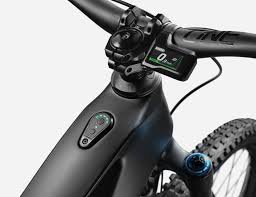Electric Mountain Bikes, Electric mountain bikes, commonly known as e-MTBs, have taken the cycling world by storm, offering a perfect blend of human power and electric assistance. These advanced bicycles allow riders to conquer tough terrains with greater ease and speed, opening new opportunities for both novice and experienced cyclists. In this article, we’ll explore the benefits, features, and reasons why electric mountain bikes are revolutionizing outdoor adventures.
What Are Electric Mountain Bikes?
At their core, electric mountain bikes are traditional mountain bikes equipped with an electric motor and battery. The motor assists the rider by providing additional power when pedaling, especially on steep hills or challenging trails. This makes riding less exhausting and more enjoyable, while still maintaining the physical exercise aspect that cyclists love.
Unlike electric scooters or motorcycles, e-MTBs do not eliminate the need for pedaling but enhance the rider’s effort. Depending on the model, the motor can assist at different levels, giving the rider control over how much power to use.
Key Features of Electric Mountain Bikes
- Powerful Motors
Electric mountain bikes are equipped with robust motors, typically ranging from 250W to 750W, that help conquer various terrains. Some models offer multiple power modes, allowing users to customize their riding experience. - Long-Lasting Batteries
Most e-MTBs feature lithium-ion batteries that can last for 40-100 miles on a single charge, depending on factors like terrain, rider weight, and power usage. The battery is usually integrated into the frame, ensuring a sleek design and balanced weight distribution. - Durable Frame and Components
Given their off-road purpose, electric mountain bikes are built with sturdy frames made from materials like aluminum or carbon fiber. They also feature advanced suspension systems, wider tires, and strong hydraulic disc brakes for handling rough and uneven trails. - Pedal-Assist and Throttle Options
E-MTBs often come with two types of motor engagement: pedal-assist and throttle. Pedal-assist provides power when the rider pedals, while throttle mode delivers power on demand without pedaling. Many riders prefer pedal-assist for a more natural cycling experience.
Why Choose an Electric Mountain Bike?
- Extended Range and Access to More Trails
One of the biggest advantages of electric mountain bikes is the ability to travel farther and explore more difficult trails. Riders who might be intimidated by long or steep routes can now enjoy the thrill of mountain biking without worrying about getting too exhausted. - Improved Fitness
Contrary to popular belief, electric mountain bikes do not take away from physical activity. Riders still need to pedal, which provides cardiovascular exercise. However, the electric assist ensures that the rider can maintain a steady pace and enjoy longer rides without excessive fatigue. - Accessibility for All Skill Levels
E-MTBs make mountain biking accessible to people of all fitness levels and ages. Beginners can start on easier trails and use higher levels of assistance, while experienced cyclists can tackle more challenging paths with reduced assistance, making the sport more inclusive. - Eco-Friendly Transportation
As a greener alternative to cars or motorcycles, electric mountain bikes contribute to reducing carbon emissions. They are an excellent choice for outdoor enthusiasts who want to minimize their environmental impact while enjoying nature. - Adventure and Fun
Electric mountain bikes bring a whole new level of fun to outdoor adventures. The extra boost provided by the motor gives riders the freedom to focus on enjoying the scenery, tackling challenging terrain, and improving their riding skills without the worry of running out of energy.
Factors to Consider Before Buying an Electric Mountain Bike
- Battery Range
Different e-MTBs come with varying battery capacities. Consider the distance and type of terrain you typically ride on and choose a model with a battery range that suits your needs. - Motor Power
Motor power impacts how much assistance the bike can provide. If you ride on rugged, steep terrain, a higher-powered motor may be beneficial. For flat trails or moderate climbs, a 250W motor may suffice. - Weight and Portability
Electric mountain bikes are generally heavier than standard bikes due to the motor and battery. While this adds stability, it may also make transportation and storage more challenging. Some models offer lighter designs to balance power and portability. - Price
E-MTBs can range from $2,000 to over $10,000, depending on the features, brand, and quality of components. Investing in a reputable brand with durable materials is crucial, as it ensures long-lasting performance.
The Future of Electric Mountain Bikes
As technology continues to evolve, electric mountain bikes are becoming more efficient, lighter, and affordable. Innovations such as improved battery technology, smarter power management systems, and integration with GPS or fitness tracking apps will further enhance the riding experience. Moreover, as more people seek eco-friendly and exciting outdoor activities, the demand for e-MTBs is set to grow rapidly.
Electric mountain bikes are not just a trend—they represent a significant shift in how we approach adventure cycling. Whether you’re a seasoned mountain biker or someone looking to enjoy nature with less strain, e-MTBs offer the perfect balance between performance, convenience, and fun. So, gear up and experience the thrill of the outdoors like never before with an electric mountain bike!
You Might Also Like These:

